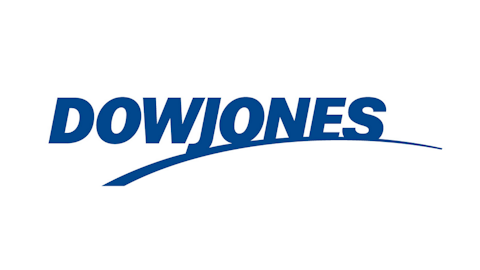On this day in economic and business history…
The first Wal-Mart Stores, Inc. (NYSE:WMT) opened its doors in Rogers, Arkansas on July 2, 1962.
At this point in his life, Wal-Mart Stores, Inc. (NYSE:WMT) founder Sam Walton had already racked up over two decades of experience as a retailer. He got his start in the industry as a management trainee in one of J.C. Penney Company, Inc. (NYSE:JCP)‘s Iowa stores in 1940. Penney’s focus on maximizing the value of a customer’s visit goes a long way toward explaining Walton’s lifelong obsession with making his own store experiences better through research and observation.
Five years later, Walton purchased his first store, a Ben Franklin five-and-dime in Newport, Arkansas with a $20,000 from his father-in-law. Walton took the unprofitable Ben Franklin and turned it into that company’s biggest success in Arkansas, learning along the way that lower prices and proper in-store marketing techniques can make a world of difference in the brutally competitive retail industry.
Walton was forced to move on to another Ben Franklin in 1951 after losing his lease on the first store. This one was rechristened the Walton 5 and 10, and its location — in Wal-Mart Stores, Inc. (NYSE:WMT)’s current corporate headquarters of Bentonville — has informed the Wal-Mart focus on small-town communities ever since. Today it serves as a Wal-Mart corporate museum:

Source: Jonathan Babin via Flickr .
Walton became Ben Franklin’s largest franchisee by 1962, with 16 stores scattered across Kansas, Arkansas, and Missouri. At this point, he was convinced that a larger retail footprint would better serve his small-town customer base, and the first Wal-Mart opened in Rogers with twice the space of his original 5 and 10. Here’s how Walton himself described that first store in his autobiography:
The store was only 12,000 square feet, and had an eight-foot ceiling and a concrete floor, with bare-boned wooden plank fixtures. Sterling [a competitor] had a huge variety store in downtown Harrison, with tile on the floor, nice lights, really good fixtures, and good presentations. Ours was just barely put together — highly promotional, truly ugly, heavy with merchandise — but for 20% less than the competition. We were trying to find out if customers in a town of 6,000 people would come to our kind of a barn and buy the same merchandise strictly because of price. The answer was yes.
Wal-Mart was one of three discount retail giants that began operating that year — the first Kmart opened in March of 1962, and the first Target Corporation (NYSE:TGT) opened in Minnesota that May. Wal-Mart Stores, Inc. (NYSE:WMT) grew quickly, and within five years it had expanded to 24 stores posting a cumulative $13 million in annual sales. However, since both of Wal-Mart’s major discount competitors were originally new brands of established retailers, they got off to faster starts. Target Corporation (NYSE:TGT)’s parent company went public in 1967 with nearly 20 times Wal-Mart’s annual sales, and Kmart — now part of Sears Holdings Corp (NASDAQ:SHLD) — had opened 10 times as many locations as Wal-Mart by that point in time. But Wal-Mart was only getting started.
By 1970, Wal-Mart Stores, Inc. (NYSE:WMT) had expanded to 38 locations and was generating over $44 million in annual sales, but mounting debts made further expansion difficult. Walton took the company public that fall, retaining 61% ownership and raising enough cash to expand to 51 stores within the next two years. These shares went on to become one of the absolute best investments anyone could make over the past 50 years. Since their first day on the market, Wal-Mart shares have gained over 900,000% — not including any reinvested dividends.
The 1980s were the decade when America woke up to Wal-Mart. The company ended the 70s with 276 stores and 21,000 employees, reaching $1 billion in annual sales after what was then a record-breaking 17 short years of operation. In 1983, Wal-Mart opened its first Sam’s Clubs, the massive supercenters named after Wal-Mart’s founder. That year would mark the dawn of the warehouse-club retail era just as 1962 marked the beginning of discount retailing — Costco also opened its first store in 1983, and would later undermine Sam Walton’s efforts to grow in that sector by merging with Price Club, a warehouse chain that Walton had wanted to add to his own corporate empire.
Despite this setback, Wal-Mart could not be stopped. By 1985, Walton’s $3 billion fortune made him the richest man in America. The press coverage of Walton rankled him so much that his autobiography brought up the offense he felt at being painted as “a really cheap, eccentric recluse, sort of a hillbilly who more or less slept with his dogs in spite of having billions of dollars stashed away in a cave.” By the end of the decade Wal-Mart became the first retailer to ever post after-tax profits of over $1 billion, finally passing Kmart as the nation’s most profitable retailer. Wal-Mart Stores, Inc. (NYSE:WMT) ended the 80s with over 1,400 stores in 26 states.

Source: Member uacescomm on Flickr, cropped for focus.






